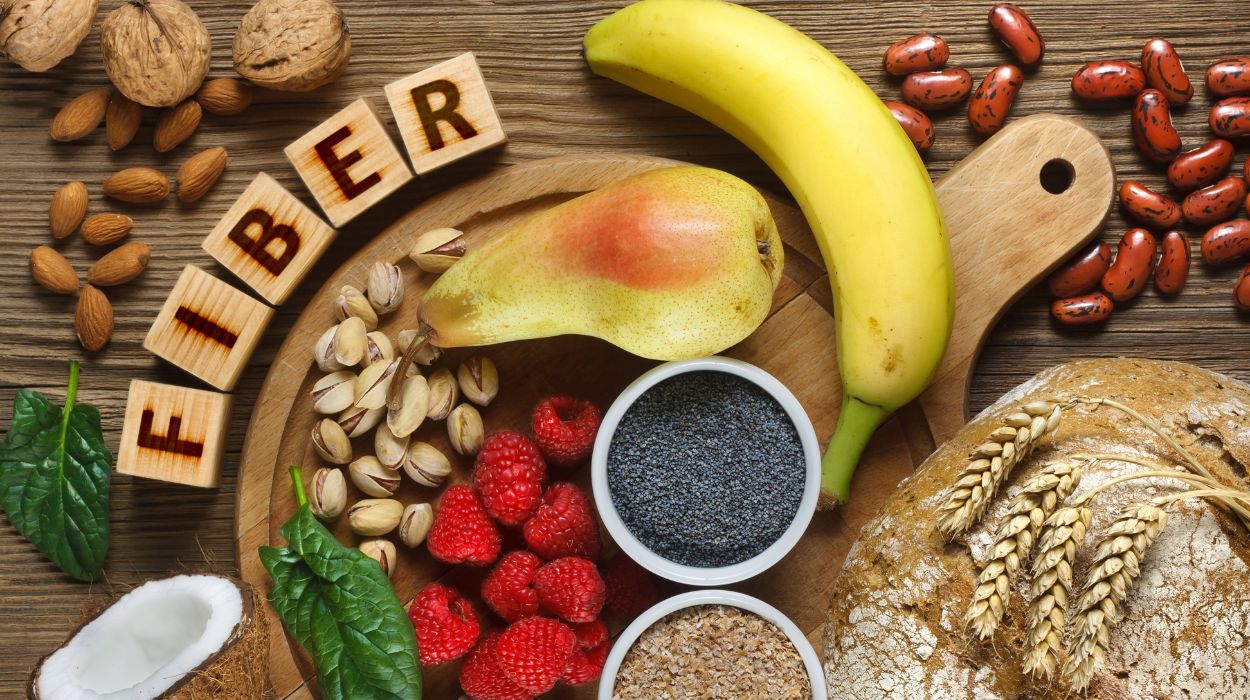How To Get Rid Of Hanging Belly After C-Section – 8 Healthy Tips 2024

Losing belly fat after birthing a child is not an easy feat. It is much harder if you have had a cesarean section. You will need to be patient with your body because pregnancy and childbearing have already put you through a lot. After your C-section, your body goes into recovery, you will also need to ensure that you are staying healthy to provide for your child’s needs. New moms are getting results from exercise, a healthy and balanced diet, and using CBD for weight loss.
8 Tips For Mothers To Lose Belly Fat After C-Section
New moms looking to lose reduce belly fat after a Cesarean section may want to consider working to lose weight using these tips:
- Breastfeeding
- Eat fiber
- Drink lots of water
- Calorie deficit
- Sleep well
- Physical activity
- Use supplements
- Eat lean proteins
During pregnancy, women have excess weight gain and some of it goes to their belly. However, now that the baby is out, the fat does not just disappear too. Do not let celebrity postpartum transformation photos fool you. Many women will not be reverting to their pre-baby bodies a few days after childbirth. You might find that you still look about 6 months pregnant for the first few weeks after having your baby.
A C-section can slow down your weight loss. That is because you will need to wait till you are fully recovered to head back to the gym. Even when you are deemed fit to return to the gym, you might only be able to perform specific exercises.
8 Healthy Tips To Get Rid Of Hanging Belly After C-Section
Breastfeeding

Breast milk is nature’s nutrition bank for babies. Breast milk contains lots of nutrients that aid your child’s physical and mental development[1]. Breastfeeding your baby also helps with their immunity. The American Academy of Pediatrics (AAP) recommends exclusively breastfeeding your baby for the first six months after birth[2].
Nevertheless, breastfeeding your newborn can also be beneficial to you. Breastfeeding your baby can help you lose weight. You read that right. Breastfeeding can help you lose your postpartum belly faster.
How does it burn fat? The answer is energy. To make enough milk to sufficiently meet your child’s nutrition needs, your body uses about 500 calories daily[3]. The energy needed for breastmilk production daily goes up as your child grows and eats more. Your body may burn fat stores to provide the energy you need for a steady breast milk supply.
It is not all talk. A study monitored postpartum weight loss among American women and found 2.7% greater weight loss[4] after 12 months among women who exclusively breastfed their babies for at least three months than their counterparts. The study also revealed that you have a higher chance of returning to your pre-pregnancy weight or lower if you exclusively breastfeed your baby for the first few months. These results may give you another reason to dedicate the first few months of your newborn’s life exclusively to breast milk.
Other benefits of breastfeeding for you include helping your uterus revert to its previous size and lowering the risk of postpartum depression after a C-section. It can also suspend your menstrual cycle and act as nature’s contraceptive.
Eat Fiber

Losing weight also involves changing your diet. Consuming a fiber-rich diet instead of processed foods is essential to reducing your postpartum tummy after a C-section delivery. Eating mostly whole foods is an easy way to include fiber in your diet. Fiber is a type of carbohydrate[5] that your body cannot digest. It passes through your digestive system unchanged. While fiber technically does not have any nutritional benefits, it is still great for your digestive system.
Fiber is important for regulating sugar metabolism in your body. First of all, including lots of fiber in your meals helps keep you full. So, you can be consuming more while keeping your calories in check. Since you are full from your previous meal, you can keep away from unhealthy snacks. Eating a fiber-rich diet is important if you are trying to reduce weight and burn belly fat for a flatter mommy tummy after a C-section.
You can enjoy the other wholesome benefits of fiber when you include it in your diet after having your baby via a C-section. Fiber consumption may decrease your risk[6] of heart disease and diabetes. Consuming fiber instead of processed foods is also excellent for maintaining your bowel health after a C-section. It could decrease your risk of diverticular disease, constipation, and colorectal cancer.
The daily recommendation for fiber is about 20-30 grams daily[7]. Fiber-rich foods that you may want to include in your diet to help you meet your daily requirements include legumes, nuts, vegetables, fruits, and whole grains. While fresh fruits are an excellent source of fiber, you will have to be careful with fruit juices. Some fruit juices have the fiber removed and taking them might not help you incorporate fiber into your diet.
Drink Lots Of Water

Are you drinking enough water? Your urine can tell you. Pale yellow urine means that you are drinking enough water. On the other hand, darker urine means that you should increase your water consumption. Drinking enough water is crucial during your recovery after a C-section. Water helps keep you hydrated and is crucial for losing weight.
Keeping you satiated is one of the ways that drinking water helps you with weight loss. Drinking enough water can help keep you full[8] till you are ready for your next meal. Also, thirst can sometimes feel like hunger. If you feel hungry too close to your previous meal, you might want to try drinking water first.
Another way that drinking water can help you burn fat is via thermogenesis[9]. Although the amount of fat lost this way is small, it can still contribute to helping you hit your belly goals after a C-section. Drinking enough water is also important if you want to maintain a sufficient breast milk supply after a C-section.
If you are having trouble drinking enough water daily, liquid calories are not an acceptable alternative. Taking soda is not a healthy way to meet up with your daily water intake. Such drinks contain lots of sugar and calories with very little nutrition. It is also going to work against your weight loss after a C-section. Instead, spice up your water with a lemon or cucumber slice and drink away.
Calorie Deficit

A calorie deficit is one of the core factors for weight loss. It is basic science. If you consume more calories than you need, your body stores the excess fat, therefore weight gain. If you take in fewer calories than your daily needs, your body dips into fat stores to power bodily functions.
However, you should not decrease your daily calorie intake to dangerously low levels after a C-section. You are a new mom, and you need to eat healthily if you are going to keep producing milk for your baby. Getting proper nutrition is also essential for your body to heal properly after a C-section.
Extremely restrictive diets are not great for you, especially at this time. If you starve simply to lose weight after a C-section, you could end up gaining more instead. Starvation diets can cause you to binge eat afterward. You are also likely to cheat on diets[10] that are too restrictive. A great way to help you stick to your caloric deficit diet is to put more fiber-rich options on your plate. That way, you still get filled up afterward.
A calorie deficit diet will not help you get rid of hang belly alone after a C-section. Changing to a healthy diet will not simply direct your body to take fat from specific body parts. However, as the diet helps you with general weight loss, you will begin to notice improvements in your belly too.
Sleep Well

Getting enough sleep when you have got a newborn is an uphill task. In between numerous feedings and a fussy baby, you might barely be getting up to four hours of sleep each night. However, getting rid of the hang belly after a C-section requires you to get adequate sleep.
Stress and sleep deprivation can cause weight gain. Stress increases your cortisol levels which can affect your metabolism. As a new mom, you should be clocking up to eight hours of sleep[11] each night if you would like to cut down the fat after a C-section delivery.
Before grumbling about how getting that much sleep is impossible, there is a little trick you can try. Sleep when your baby sleeps. So, instead of trying to meet up with chores when your baby takes their next nap, use that time to get your beauty rest too. Taking advantage of those breaks when your baby is asleep to rest, energizes you to be more productive for the rest of the day.
If you feel like you are unable to keep up with your home tasks and get enough sleep, you might need to ask for help. Family and friends could help you with some tasks during this period. It does take a village.
Physical Activity

Having your baby through a C-section means that you may need a longer time before you can exercise. Consulting your doctor is the surest way to know if you are ready to start exercising after a C-section delivery. Most women are ready for some physical activity by the eighth week[12] after the incision heals.
If you are getting back into physical activity, start slow. Low-impact workouts are typically best as you work your way to more demanding exercises. For instance, walking through the neighborhood or light yoga can be a good place to start. You typically do not need much to start exercising again. Comfortable shoes for your walk and a yoga mat should get you started.
When your doctor clears you for more intense workouts, you can throw them in. Even while following your doctor’s advice, you should still listen to your body. Take breaks when you need them and drink enough water to keep you hydrated throughout the workout.
Aerobics is an excellent way to burn calories and will have you sweating in no time. On the other hand, lifting weights can help you get toned and lose the excess fat in your abdomen. Start with lifting lighter weights and work your way up as you get more comfortable. You can also try exercises that specifically target your abdominal muscles.
Exercises that you can try to lose belly fat after your C-section include bridges, planks, Kegels, pelvic tilt, forward bend, and lower abdominal bend.
You are probably groaning and mumbling something about not having enough time to work out in between caring for the baby. However, you can make more time if you include your baby in your workouts. For instance, put your baby in a stroller and walk around or use your baby as a weight for resistance training. You can enjoy the fresh breeze outside, exercise, and spend quality time with your baby.
Use Supplements

Using weight loss supplements to support your other weight loss techniques can help you see results faster. Weight loss supplements work through various meals. Some may decrease your appetite while others Increase your metabolism.
CBD, popular for pain relief, is also gaining some attention as a weight loss supplement. Studies show the potential of CBD for weight loss[13]. Before using CBD or any other supplement for weight loss after a C-section you need to speak with your doctor. This is especially important if you are breastfeeding because of the slight chance that the components of the pill can make it into your breast milk.
Using supplements to lose weight after a C-section should not cause you to suddenly drop up to 10 pounds in your first week. It is not a magic weight loss pill. If you notice a sudden weight loss, you should speak to your doctor.
The right weight loss supplements should support your other weight loss methods. So, if you are planning to only take them and hope that the fat melts away, you might not get great results.
Eat Lean Protein

Lean protein is another food that should feature on your plate alongside fiber. Lean protein such as fish and poultry can help you achieve a flatter belly. You see, lean protein contains less fat. It is also excellent at keeping you full[14] so that you can go long periods between meals.
Furthermore, lean protein is vital for building muscle. Once you are back working out and lifting weights, you should ensure that you are getting enough protein. Your protein consumption provides the amino acids that your body needs to repair and build muscle[15]. Building muscle helps give your belly more definition and tone. Proteins are also important for tissue repair and your recovery post-C-section.
How Long After C-Section For Belly To Shrink
After having your baby, you might still look pregnant for a couple of weeks. Your belly size is due to fat deposits, fluid, and uterus size. For the next couple of weeks, your body should begin removing the excess fluids. Your uterus should also begin to return to its normal size and this may take about 6-8 weeks[16]. Therefore, you should notice your belly shrinking as the days go by. Your uterus may need about eight weeks to return to its normal size.
Getting rid of the fat deposits in your belly after your C-section requires your contribution. Exercising, dieting, and using supplements can help you with weight loss. You can also try other ways to lose tummy fat such as belly binding and postnatal massage. Postnatal massage[17] helps break down fluids in your lymph nodes. As your lymphatic system drains the fluids away, you may begin to notice your belly becoming flatter.
A postpartum support belt helps support your abdominal muscles and some believe it could help shrink your belly. However, you need your doctor’s clearance before using a postpartum support belt or getting a postnatal massage.
The most important thing you need to get your belly flatter after a C-section delivery is patience. Pregnancy took 40 weeks to change your body, so do not expect to get back to your pre-pregnancy size in only a few days. Stay consistent and follow through with the tips and you will see results soon enough.
Conclusion
Congratulations on making it through pregnancy and childbirth. Now that it is time to heal and get your body back post-delivery, patience is key. Trusting the process and staying consistent can help you achieve long-lasting results and possibly get your pre-pregnancy body back.
After a C-section delivery, breastfeeding can help you with weight loss for a flat tummy. Other things you can do include healthy eating habits such as eating fiber and lean proteins, drinking water, exercising, maintaining a calorie deficit, sleeping well, and using supplements.
+ 17 sources
Health Canal avoids using tertiary references. We have strict sourcing guidelines and rely on peer-reviewed studies, academic researches from medical associations and institutions. To ensure the accuracy of articles in Health Canal, you can read more about the editorial process here
- womenshealth.gov. (2017). Making the decision to breastfeed. [online] Available at: https://www.womenshealth.gov/breastfeeding/making-decision-breastfeed/#1.
- Breastfeeding and the Use of Human Milk. (2012). PEDIATRICS, [online] 129(3), pp.e827–e841. Available at: https://pediatrics.aappublications.org/content/129/3/e827#:~:text=The%20AAP%20recommends%20exclusive%20breastfeeding,and%20the%20Institute%20of%20Medicine.
- https://www.nichd.nih.gov/. (2017). When breastfeeding, how many calories should moms and babies consume? [online] Available at: https://www.nichd.nih.gov/health/topics/breastfeeding/conditioninfo/calories.
- Jarlenski, M.P., Bennett, W.L., Bleich, S.N., Barry, C.L. and Stuart, E.A. (2014). Effects of breastfeeding on postpartum weight loss among U.S. women. Preventive Medicine, [online] 69, pp.146–150. Available at: https://www.ncbi.nlm.nih.gov/pmc/articles/PMC4312189/.
- Barber, T.M., Kabisch, S., Pfeiffer, A.F.H. and Weickert, M.O. (2020). The Health Benefits of Dietary Fibre. Nutrients, [online] 12(10), p.3209. Available at: https://www.ncbi.nlm.nih.gov/pmc/articles/PMC7589116/.
- Anderson, J.W., Baird, P., Davis Jr, R.H., Ferreri, S., Knudtson, M., Koraym, A., Waters, V. and Williams, C.L. (2009). Health benefits of dietary fiber. Nutrition Reviews, [online] 67(4), pp.188–205. Available at: https://pubmed.ncbi.nlm.nih.gov/19335713/.
- The Nutrition Source. (2012). Fiber. [online] Available at: https://www.hsph.harvard.edu/nutritionsource/carbohydrates/fiber/.
- Stookey, J.D., Constant, F., Popkin, B.M. and Gardner, C.D. (2008). Drinking Water Is Associated With Weight Loss in Overweight Dieting Women Independent of Diet and Activity. Obesity, [online] 16(11), pp.2481–2488. Available at: https://pubmed.ncbi.nlm.nih.gov/18787524/.
- Vij, V.A. (2013). Effect of “Water Induced Thermogenesis” on Body Weight, Body Mass Index and Body Composition of Overweight Subjects. JOURNAL OF CLINICAL AND DIAGNOSTIC RESEARCH. [online] Available at: https://www.ncbi.nlm.nih.gov/pmc/articles/PMC3809630/.
- NHS Choices (2021). 10 weight loss myths – Healthy weight. [online] Available at: https://www.nhs.uk/live-well/healthy-weight/ten-weight-loss-myths/.
- Chaput, J.-P. and Tremblay, A. (2012). Adequate sleep to improve the treatment of obesity. Canadian Medical Association Journal, [online] 184(18), pp.1975–1976. Available at: https://www.ncbi.nlm.nih.gov/pmc/articles/PMC3519150/.
- Tommys.org. (2013). When and how to exercise after a c-section. [online] Available at: https://www.tommys.org/pregnancy-information/giving-birth/caesarean-section/when-and-how-exercise-after-c-section#:~:text=Gentle%20activity%20will%20help%20you,amount%20of%20exercise%20you%20do.
- Bielawiec, P., Harasim-Symbor, E. and Chabowski, A. (2020). Phytocannabinoids: Useful Drugs for the Treatment of Obesity? Special Focus on Cannabidiol. Frontiers in Endocrinology, [online] 11. Available at: https://www.ncbi.nlm.nih.gov/pmc/articles/PMC7064444/.
- Leidy, H.J., Carnell, N.S., Mattes, R.D. and Campbell, W.W. (2007). Higher Protein Intake Preserves Lean Mass and Satiety with Weight Loss in Pre-obese and Obese Women*. Obesity, [online] 15(2), pp.421–429. Available at: https://pubmed.ncbi.nlm.nih.gov/17299116/.
- Carbone, J.W. and Pasiakos, S.M. (2019). Dietary Protein and Muscle Mass: Translating Science to Application and Health Benefit. Nutrients, [online] 11(5), p.1136. Available at: https://www.ncbi.nlm.nih.gov/pmc/articles/PMC6566799/.
- PeaceHealth. (2012). Health Topics A-Z. [online] Available at: https://www.peacehealth.org/medical-topics/id/abl1277.
- Confinement Nanny Singapore | The leading confinement nanny agency providing confinement nanny, daytime nanny and babysitter in Singapore. (2017). NannySOS. [online] Available at: https://www.nannysos.com.sg/post-natal-massage-after-c-section/.



